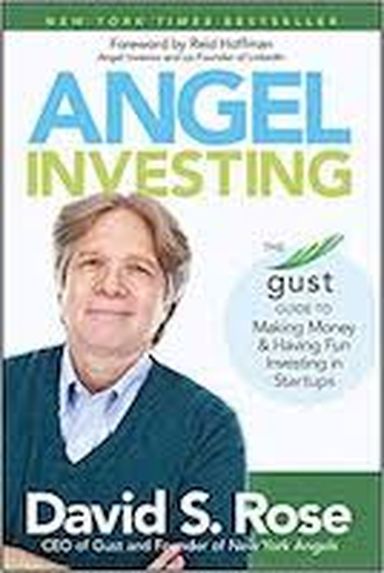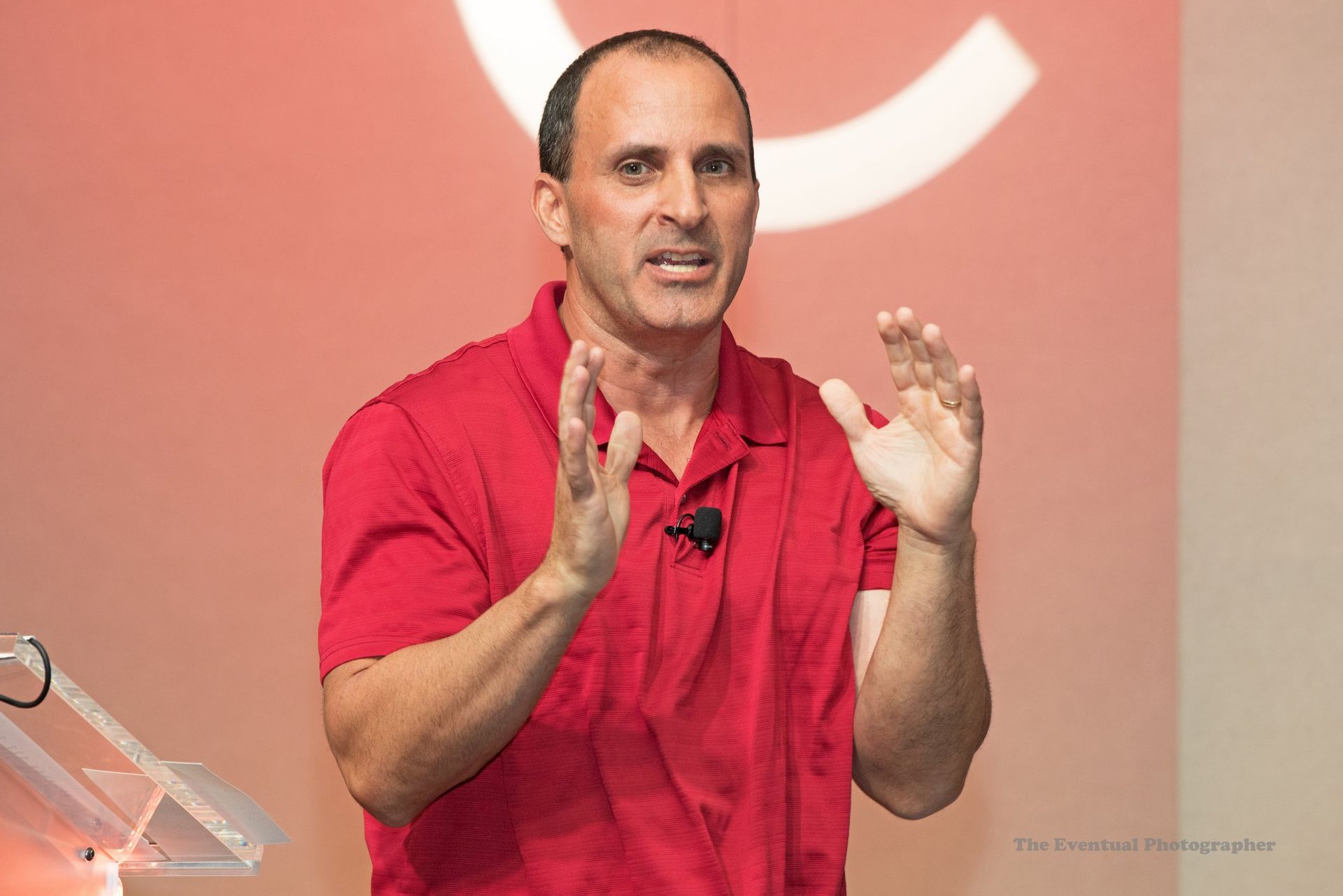Every journey begins with a goal or a destination in mind. But sometimes, the goals and intended destinations shift based on new learnings. Such is the case with my own journey into the angel investor market.

 What attracted me to angel investing? Simply put, I enjoy being around entrepreneurs, and learning how they build their businesses. Plus, I respect their knack for executing the most difficult task of all: Creating businesses that create jobs and career opportunities for others. That's pretty awesome stuff.
What attracted me to angel investing? Simply put, I enjoy being around entrepreneurs, and learning how they build their businesses. Plus, I respect their knack for executing the most difficult task of all: Creating businesses that create jobs and career opportunities for others. That's pretty awesome stuff.
Still, interviewing and blogging about entrepreneurs for ChannelE2E is one thing. Actually investing in entrepreneurs and their companies? I certainly had a lot of learning to do. I explained my early learnings (2014-2018) in an April 2019 blog. As I explained in that blog, I now focus much of my angel investment efforts with Florida Funders, a hybrid venture fund/crowdsourcing platform for established angels (and aspiring angels like me).
I also realized angel investing is a bit like becoming an entrepreneur and starting a business. To succeed, you've got to answer a bunch of questions to figure out your purpose, focus and intended destiny.
Amid that realization, I picked up two books:
- Angel: How to invest in technology startups, by Jason Calacanis.
- Angel Investing: The Guest Guide to making money and having fun investing in startups, by David S. Rose.
Each book is different in tone and style. Calacanis is witty, sarcastic, smart and occasionally offensive. Rose provides more of a textbook conversation about angel investing. Both approaches are effective. And both books, I believe, are required readings.
Angel Investing: Sharpening My Focus
I read the books. I spoke with angels. I rubbed elbows with former MSP owners who are now in the angel market -- folks like Tommy Wald. PS: Tommy has also penned a book called The MSP CEO: Your Guide to Building a Successful MSP Business I'll share more details on that soon.
Based on all those conversations and readings and interactions with startups seeking money, I realized I needed:
1. An angel investing budget. Just how much money am I willing to risk as an angel investor? Many of the experts say a good figure is 10 percent of your net worth. My Answer: After lengthy conversations with my wife, we're willing to invest and risk about 5 percent of our net worth in angel deals. But that means we're not 'big sum' investors. Instead, we need to participate with peer angels to pool our money and get in on deals.
2. A commitment to diversifying: The highest performing angels are typically diversified across 20 or more investments. My answer: Yes, I'm on that journey to invest in at least 20 companies.
3. A timeframe: Once your money goes into an investment, you have to be willing to let it sit there for seven to 10 years. My answer: Sounds good.
For the sake of a simple, catchy headline I've used the year 2030 as an example target for my complete exit from 20 or so investments. But the date will certainly slip here or there base on:
- when I get in to each deal; and
- when each deal has a financial event -- such as bankruptcy (gulp), a money-losing sale (likely), a small return exit (somewhat likely), a big exit (even less likely) or IPO (highly, highly unlikely).
Re-read the bullet points above and you might get depressed.
Side note - Why get involved in angel investing if so many deal fails? The simple answer, in U.S. baseball terms:
- Make sure you have enough at bats (i.e., 20 investments) to increase your odds of hitting a grand slam and a few home runs that more-than offset your many, many strikeouts.
- And make sure you enjoy the game, regardless of the outcome. That means really enjoying and learning from the entrepreneurs whom you support.
 Florida Funders is a hybrid venture capital fund and crowdsourced angel investor platform.
Florida Funders is a hybrid venture capital fund and crowdsourced angel investor platform.4. A deal pipeline: But how can I find promising startups that warrant potential investment? Frankly, I don't have time for intense due diligence. And that's typically a problem for angel investors. Indeed, I've got a full-time job I love (After Nines Inc., ChannelE2E and MSSP Alert) and a family I love. Time for due diligence? Minimal. My answer: Partner up with trusted syndicates and deal leaders who perform the due diligence. The first such company is Florida Funders. My next two partners? I'll likely reveal those relationships... soon.
5. A focus on particular types of startups: Is there a vertical or "stage" of company that attracts my interest and expertise? My answer: I'll likely stick with startups that:
- have at least six months or revenues; or
- at least six months of customer installed base growth.
In other words, pre-revenue startups won't likely attract my early dollars. But I'll keep an open mind -- especially if rock star, pre-revenue entrepreneurs come knocking on my door.
Angel Investing: My Activity and Progress So Far
So, how will I get from zero investments to 20 deals?
The answer involves consistent steps each week. Sunday mornings -- early -- are typically my time to check in with Florida Funders and other deal flow providers to see what's cooking in their systems.

Based on that steady, weekly checkin-in. I found my first two angel investments.
- MSPs? Nope.
- SaaS software companies? Not quite.
Instead, my moves involve tired, highly fragmented markets that are (A) requirements for daily life and (B) primed for some automation.
My first such investment involved Trash Butler, a "revolutionary doorstep valet trash service designed for multi-family communities." The company raised $5 million in Series A funding back in April. Florida Funders was responsible for $4.1 million of that haul. I wrote a small check to be one of the angels in on the deal.
My second investment? Another sleepy market involving... laundry. Yes, laundry. The deal just closed. The startup will likely announce the funding round in a few weeks. I'll share details at that time.
Angel Investing: Good, Bad, Then Good?
Assuming I find one to two companies per quarter that warrant investment, it may take me anywhere from 2.5 to 5 years to hit my goal of diversifying across 20 startups. But there are big variables to consider:
- Year Three or Sooner: By year two, some of my initial investments could be out of business. That's just a fact of angel investing, according to all the stats and research I've read.
- Years Three to Six: By year three, it will likely be gut-check time. As some investments implode, I will need to find the courage to continue investing in either (A) more startups or (B) existing portfolio companies that need another round of funding.
- Years Seven to 10: If some of my bets pay off, some successful exits should start to emerge around this time. In theory, some of the "big" winners will offset my losses and lift my overall returns. At that point, I'll be nearing age 60. If I have a few hits, will I take the money and plow it into more startups? Hmmm... My initial guess is "yes."
Still, my crystal ball is so clouded. I don't even know what deals I'll see in the pipeline this coming Sunday morning -- let alone seven to 10 years from now.
Either way, I'll keep you posted. Special thanks to the many friends across California, Colorado, Pennsylvania, Massachusetts, New York and Florida who have influenced and shaped my approach to angel investing. You know who you are, and I appreciate it.
-jp
Disclosure: I have no current plans to angel invest in MSPs and/or tech companies in the MSP/IT channel market. If that changes, I will disclose such investments to readers.




